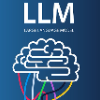Linguistic Steganography (LS) tasks aim to generate steganographic texts (stego) based on secret information. Only authorized recipients can perceive the existence of secret information in the texts and accurately extract it, thereby preserving privacy. However, the controllability of the stego generated by existing schemes is poor, and the generated stego is difficult to contain specific discourse characteristics such as style, genre, and theme. As a result, the stego are often easily detectable, compromising covert communication. To address these problems, this paper proposes a novel scheme named LLsM, a generative LS based on a Large Language Model (LLM). We fine-tuned the LLM LLaMA2 with a large-scale constructed dataset encompassing rich discourse characteristics, which enables the fine-tuned LLM to generate texts with specific discourse in a controllable manner. Then the discourse characteristics are used as guiding information and inputted into the fine-tuned LLM in the form of Prompt together with secret information. The candidate pool, derived from sampling and truncation, undergoes range encoding to ensure the stego imitate natural text distribution. Experiments demonstrate that LLsM performs superior to prevalent baselines regarding text quality, statistical analysis, discourse matching, and anti-steganalysis. In particular, LLsM's MAUVE surpasses that of some baselines by 70%-80%, and its anti-steganalysis performance is 30%-40% higher. Notably, we also present the long stego generated by LLsM, showing its potential superiority in long LS tasks.
翻译:暂无翻译




